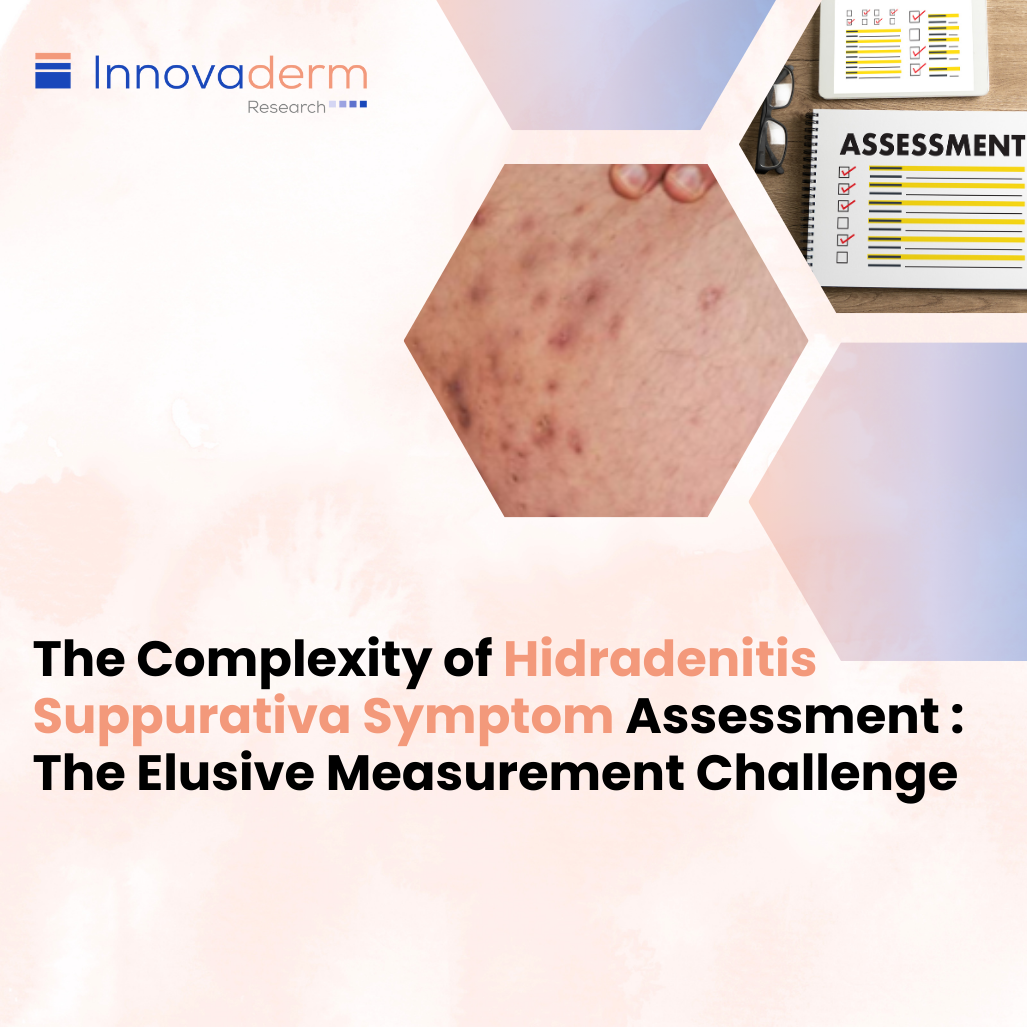 As we explore the high response rate and the minimal difference between the active and placebo arms in hidradenitis suppurativa (HS), the question arises: “Could the high placebo response rate be more related to the rater’s use of currently available outcome measurement instruments (OMI) in disease assessment rather than variations caused by the assessors themselves?” This article will examine the 3 main HS lesions—abscesses, nodules, and fistulas (tunnels)—and venture into the realm of inter-rater agreement among HS experts, focusing on the challenging task of measurement.
As we explore the high response rate and the minimal difference between the active and placebo arms in hidradenitis suppurativa (HS), the question arises: “Could the high placebo response rate be more related to the rater’s use of currently available outcome measurement instruments (OMI) in disease assessment rather than variations caused by the assessors themselves?” This article will examine the 3 main HS lesions—abscesses, nodules, and fistulas (tunnels)—and venture into the realm of inter-rater agreement among HS experts, focusing on the challenging task of measurement.
Heterogeneous Morphological Presentation of HS
When contemplating the intricate nature of HS diagnosis and its clinical presentation, it becomes crucial to acknowledge its high level of heterogeneity. This factor encompasses the 3 main lesions associated with HS: abscesses, nodules, and fistulas (tunnels). Remarkably, these lesions often exhibit substantial similarities in appearance, with instances where they share common features. Tunnels, for example, are characteristic of HS and may exhibit nodular structures at their termination points. Moreover, the drainage characteristics of abscesses and tunnels suggest additional challenges for accurate evaluation.
What is currently being rated and must be distinguished ?
- Abscess: occurs as both draining and non-draining
- Nodule: occurs as both inflammatory and non-inflammatory
- Tunnel: occurs as both draining and non-draining
What is currently not being rated, but must still be distinguished?
- Erythema, papule, plaque, pustule, comedone, scar
Distinguishing inflammatory nodules from their non-inflammatory counterparts is challenging, especially when identifying lesions with erythema (which may signify inflammation) in individuals with darker skin tones.
This complexity is compounded by the nuanced assessment needed to determine if the tunnels are actively draining, with intensity varying based on the applied pressure. These intricacies introduce a multitude of variables within the assessment of the 3 principal HS lesions. Additionally, HS includes various lesion types, each requiring a precise diagnostic eye, as mistaking one for another could result in inaccurate records. In essence, navigating HS assessment has been proven quite strenuous, as there exist several factors that occasionally render these lesions indistinguishable, even to experts.
Inter-rater Lesion and Measure Agreement and Reliability Among HS Experts
An initiative was undertaken to assess the level of agreement among HS experts in their evaluation of patients in an effort to recognize the challenges of the heterogeneous presentation of HS. This collaborative endeavor involved a cohort of 12 HS-experienced dermatologists and 24 HS patients. The objective was for each rater to independently assess the same set of 24 patients, resulting in a total of 288 assessments using 9 instruments. The study employed a prospective completely balanced design and analyzed the data using linear mixed models. The results showed that the observed intervals for limits of agreement were found to be very wide when considering the ranges of the scales for all tested OMIs. Therefore, the findings revealed a lack of agreement among the experts. Difficulty was observed, even for experienced HS raters to agree on the type and number of lesions when evaluating disease severity. This troubling outcome highlights a concerning issue that demands attention and resolution.
The complexities of HS diagnosis and assessment are not solely confined to the disease itself but extend to the very individuals tasked with conducting the evaluations. In clinical trials, it is not uncommon for the responsibility of rating patients to fall upon individuals who may not possess the most extensive expertise in the field. This additional layer of intricacy, introduced by less experienced raters, exacerbates the challenges associated with accurate lesion assessment while emphasizing the critical need for standardized measures and continuous training to enhance the reliability and validity of HS evaluations.
To conclude, it has been established that assessing and diagnosing HS is notably challenging due to its intricate and diverse morphological presentation. The multifaceted nature of HS lesions, coupled with variations in their inflammatory characteristics and the potential for inter-lesion similarities, presents a significant obstacle for both experts and less experienced raters alike. While there is a consensus among HS experts in lesion evaluation, the high level of inter-rater variability underscores the urgent need for standardized assessment measures and continuous training to boost accuracy and reliability. It is crucial to address this variability among raters within clinical trials to enhance the consistency of HS assessments and further deepen our knowledge and management of this condition.





